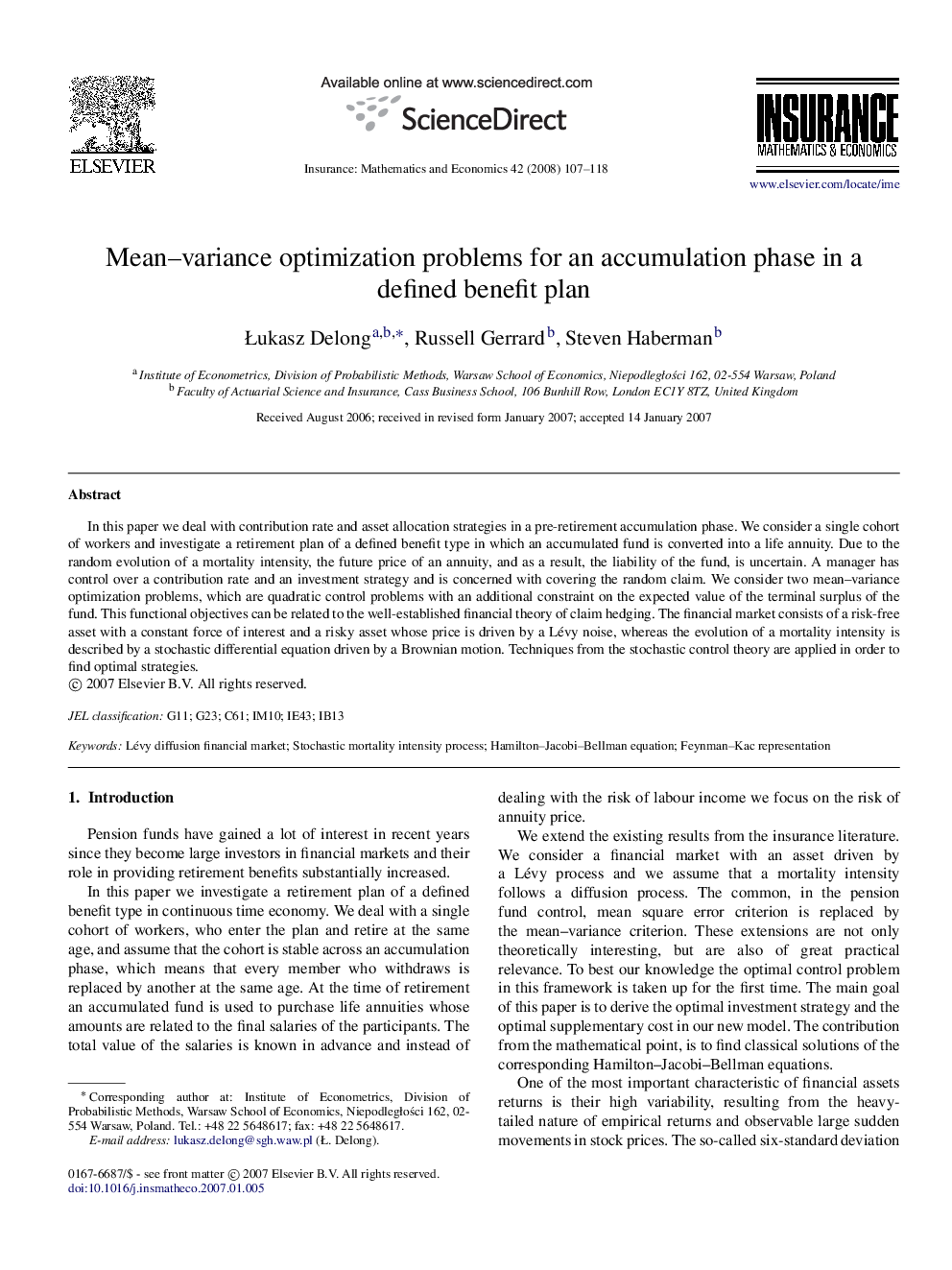| Article ID | Journal | Published Year | Pages | File Type |
|---|---|---|---|---|
| 5077357 | Insurance: Mathematics and Economics | 2008 | 12 Pages |
Abstract
In this paper we deal with contribution rate and asset allocation strategies in a pre-retirement accumulation phase. We consider a single cohort of workers and investigate a retirement plan of a defined benefit type in which an accumulated fund is converted into a life annuity. Due to the random evolution of a mortality intensity, the future price of an annuity, and as a result, the liability of the fund, is uncertain. A manager has control over a contribution rate and an investment strategy and is concerned with covering the random claim. We consider two mean-variance optimization problems, which are quadratic control problems with an additional constraint on the expected value of the terminal surplus of the fund. This functional objectives can be related to the well-established financial theory of claim hedging. The financial market consists of a risk-free asset with a constant force of interest and a risky asset whose price is driven by a Lévy noise, whereas the evolution of a mortality intensity is described by a stochastic differential equation driven by a Brownian motion. Techniques from the stochastic control theory are applied in order to find optimal strategies.
Related Topics
Physical Sciences and Engineering
Mathematics
Statistics and Probability
Authors
Åukasz Delong, Russell Gerrard, Steven Haberman,
